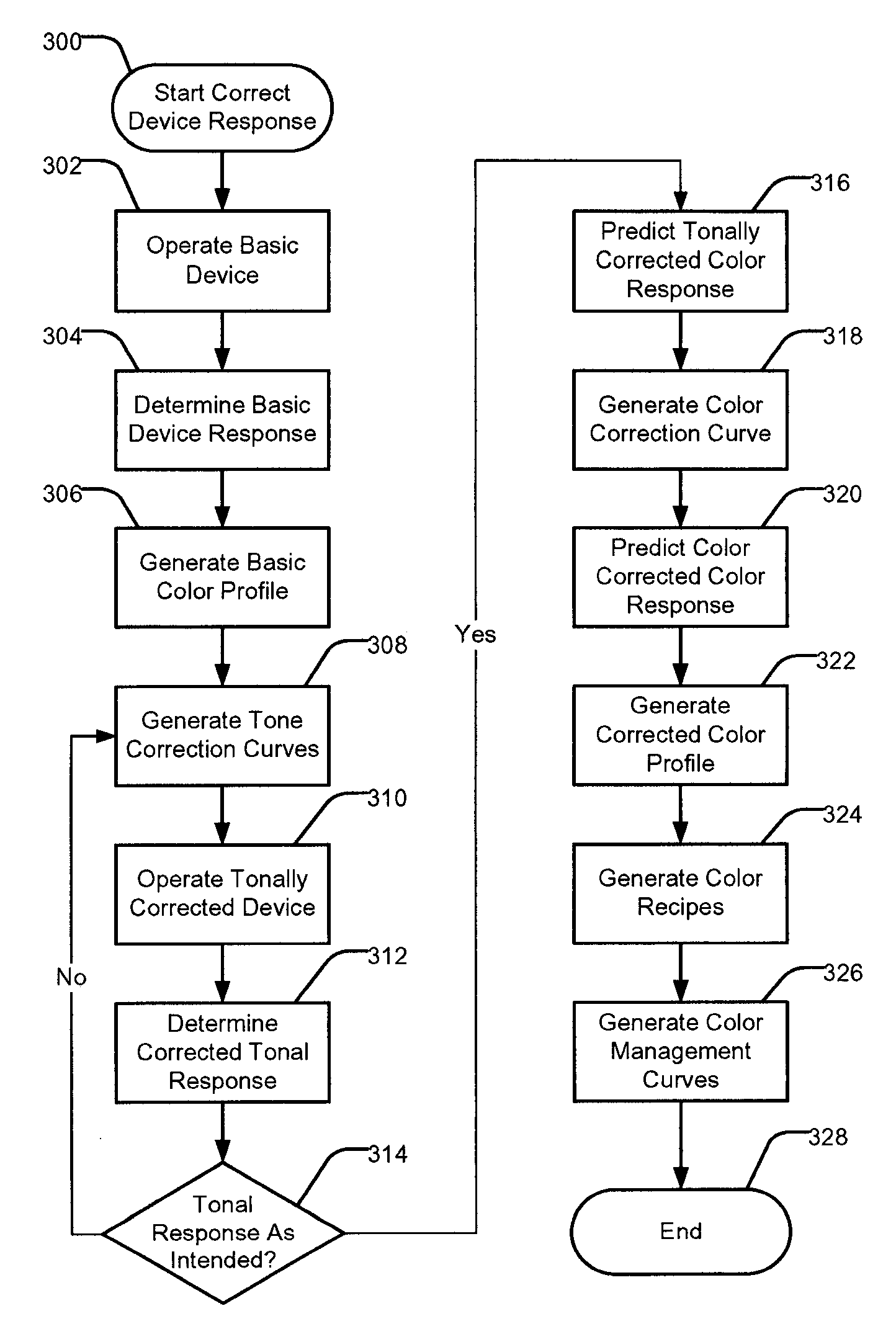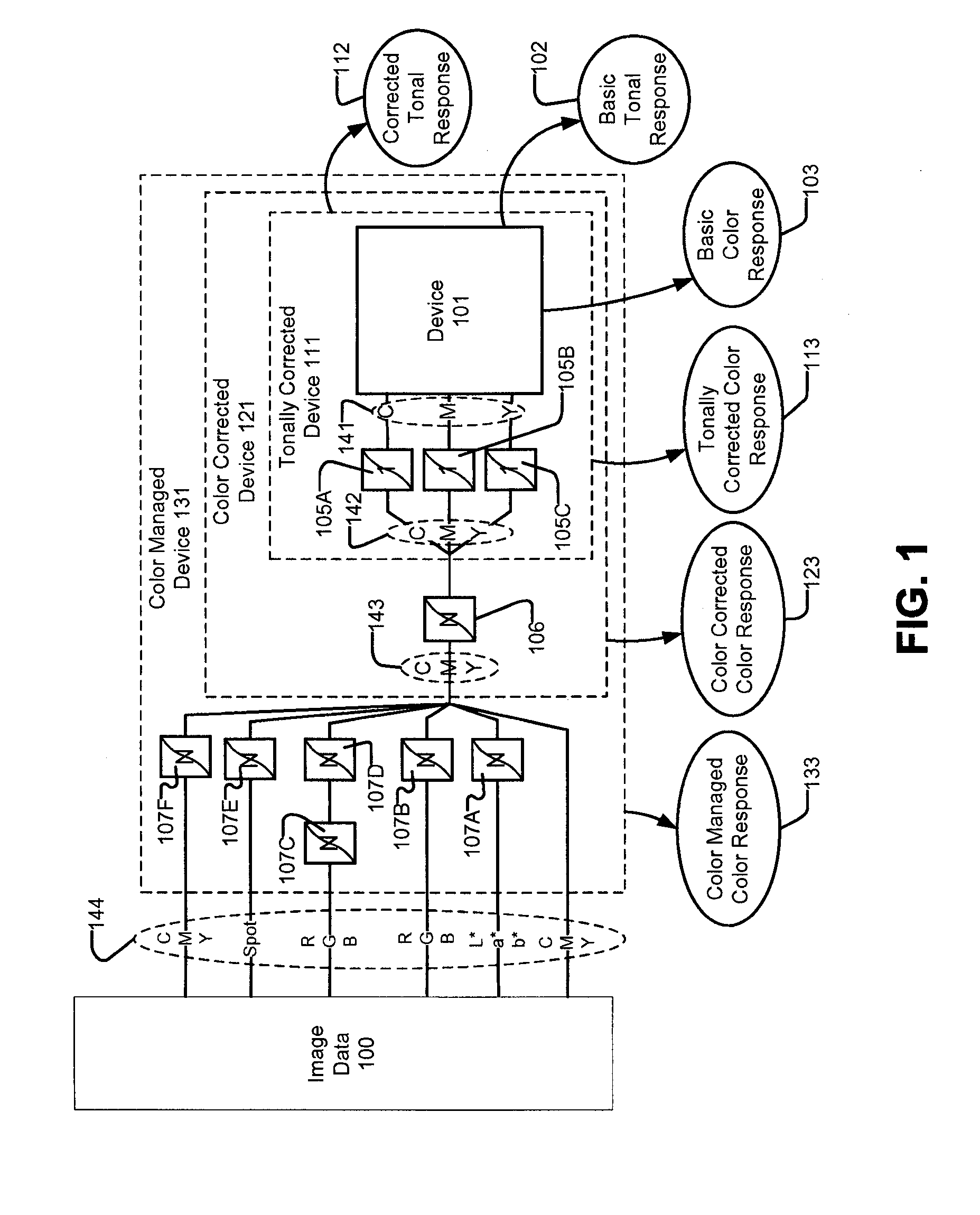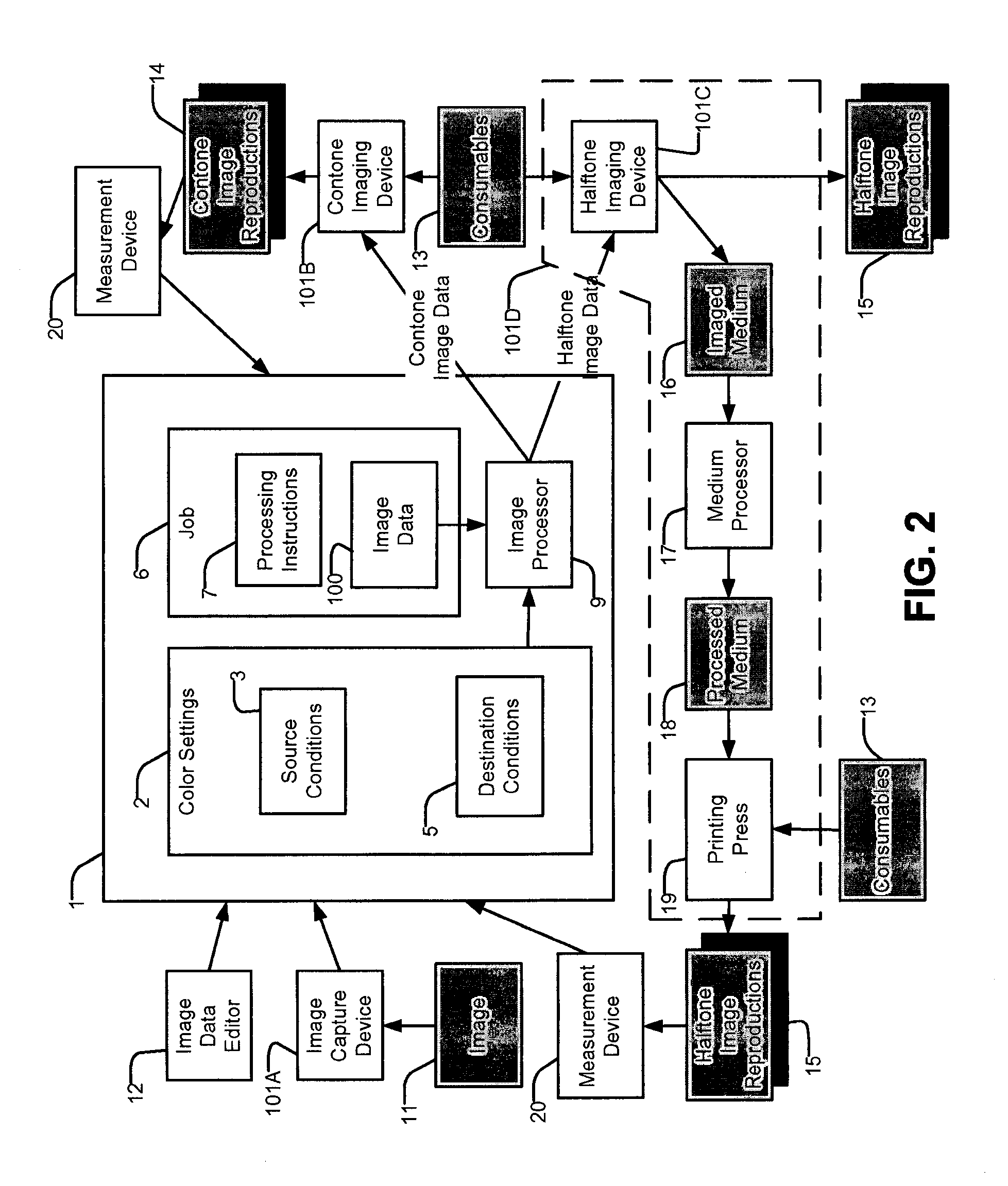Simplified color workflow
- Summary
- Abstract
- Description
- Claims
- Application Information
AI Technical Summary
Benefits of technology
Problems solved by technology
Method used
Image
Examples
Embodiment Construction
[0041]FIG. 1 is a diagram illustrating exemplary device responses and corrections for an exemplary device according to the present invention. Image data 100 is to be printed on reproduction device 101, which deposits cyan, magenta and yellow colorants. Printing devices typically utilize more than three colorants, but the smaller example set is chosen for illustrative clarity. Image data 100 can include elements defined to paint colors defined in one or more color spaces which may or may not correspond to the color space of device 101. Corrections can be performed on image data 100 based, in part, on responses identified for device 101. As described below, a device response can include information for a variety of types of responses including tonal responses and color responses.
[0042]Basic tonal response 102 can be determined for device 101 by reproducing and characterizing a range of tone steps for each device colorant, provided as device input 141, as an example. Basic tonal respon...
PUM
 Login to View More
Login to View More Abstract
Description
Claims
Application Information
 Login to View More
Login to View More - R&D
- Intellectual Property
- Life Sciences
- Materials
- Tech Scout
- Unparalleled Data Quality
- Higher Quality Content
- 60% Fewer Hallucinations
Browse by: Latest US Patents, China's latest patents, Technical Efficacy Thesaurus, Application Domain, Technology Topic, Popular Technical Reports.
© 2025 PatSnap. All rights reserved.Legal|Privacy policy|Modern Slavery Act Transparency Statement|Sitemap|About US| Contact US: help@patsnap.com



